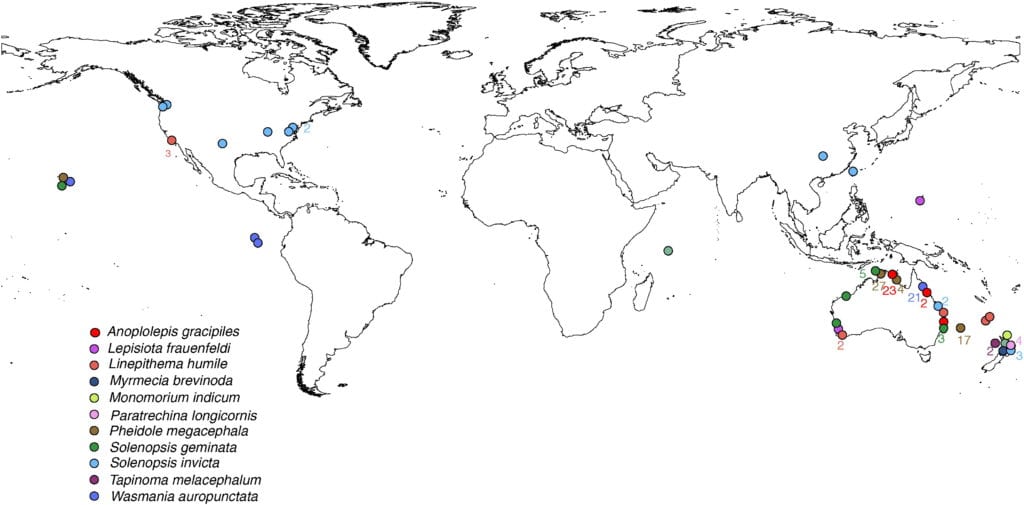Ants are one of the most cosmopolitan invasive taxa: dozens of species have invaded islands and continental areas around the globe. Invasive ants continue to colonize new ecosystems having direct and indirect negative impacts on natural and managed ecosystems. Thus, eradication is often a desirable management action. While invasive ant eradications have increased over the past 15 years, the success rate is low compared to other invasive species.
With colleagues from CSIRO Australia, Island Conservation, and University College of London, ACS reviewed ant eradications worldwide in order to assess the practice and identify knowledge gaps and challenges. Here are some highlights:
- Over 300 invasive ant eradications have been conducted worldwide, of which 144 have been documented successful.
- Active ingredients, baits, and methods used are highly unbalanced with respect to species targeted.
- Ant eradications are in a phase of increased research and development, and a logical next step for practitioners is to develop best practices.
- Targeted research on integrating natural history with eradication strategies and methodologies would improve this conservation tool.
- Ant eradications are increasing in both size and frequency, and will become a greater focus of invasive species management in the future.
